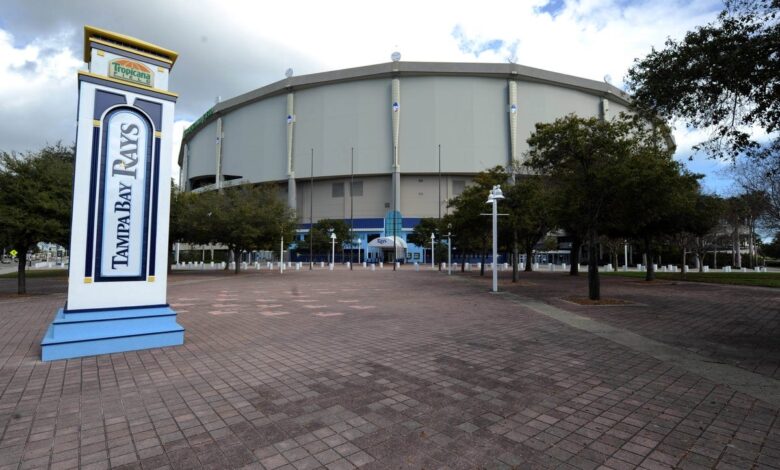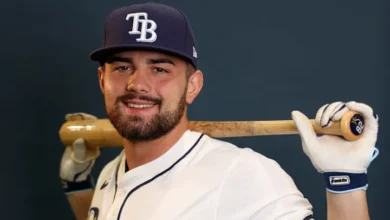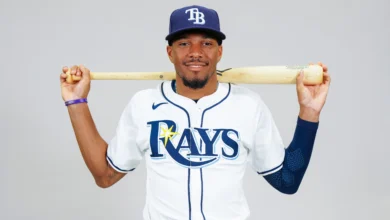
ST. PETERSBURG, Fla. – This is all about promises not kept and the credibility of new promises.
Given the current conversation centering around a new stadium for the Tampa Bay Rays, this protracted discussion has been years in the making.
The latest chapter could be defined this week. On Thursday, the St. Petersburgh City Council will hold its first workshop on a proposed $6 billion project on 65 acres in the Gas Plant district. A proposed new stadium for the Rays, at a cost of $1.2 billion, lies at the heart of the project. The surrounding area would house an African American history museum, affordable housing, and hundreds of permanent jobs.
Based on conversations within the city council, the proposal could go to the Pinellas County Commissioners for their approval. A date has not been established for the Commissioners to consider the new stadium.
The hour is urgent.
The Rays’ current lease at Tropicana Field expires at the end of the 2027 season and given a time window of about three years to build a new stadium, sands are quickly shifting through the hourglass. In all, the project would be developed over a 30-year period, but there is a great sense of urgency surrounding the stadium proposal.
Therein lies a principal concern. Because the project is considered at the municipal level, there is no incentive or drive to place a referendum before voters. Residents of the area fear their voice will not be heard in 2024 as their collective voice was not heard several decades ago.
“I see it as a real opportunity to uplift the entire city,” said Ken Welch, St. Petersburg mayor. “This isn’t just a stadium. This is a stadium surrounded by the largest development in the state of Florida, if not the nation.”
The Gas Plant district is indigenous to the social, economic, and cultural fabric of St. Petersburg. Developed between 1890 and 1900, the area became a thriving African American community and a center of community pride and esteem. In addition to business and social venues, the first school for black students was established in 1910 and the Gas Plant area rivaled the great black communities in America, including Beale Street in Memphis, Black Wall Street in Tulsa, and Harlem in New York City.
By the final decades of the 20th century, community leaders sought to develop and renovate the area. The prospect of luring a major league baseball team became attractive. An effort commenced to build a stadium and attract such a team. At the same time, the prospect of a team calling the Gas Plant home would be a catalyst for development, innovation, and improvement.
Perhaps the story predates the Rays and centers around the original construction of the facility. Tropicana Field opened on March 3, 1990, at a cost of $130 million. At the time, the structure was built within the Gas Plant section and represented one of two defining moments in abandoning the original intention of development.
First, the area was altered with the construction of Interstate 275, and second, the construction of the new stadium. In both cases, there was no referendum for voters to consider, and promises made by municipal authorities to develop and renovate the area were never realized.
With promises unkept, residents feel, decades later, they have been dropped into the same abyss.
Should a referendum be placed before voters, the outcome could be less than desirable for supporters of the stadium construction, including Rays’ owner Stuart Sternberg. Yet, recent history may be indicating how voters feel about public support of sports ventures.
In May 2023, voters in Tempe, Arizona rejected a proposal to help fund a $2.1 billion arena for the NHL Arizona Coyotes. As with recent developments, this would be mixed-use with retail shops, restaurants, housing and the Coyotes promised to clear a municipal waste site on their dime.
Then, last month, voters of Jackson County, Missouri rejected a sale tax that would help renovate the Chiefs’ Arrowhead Stadium and assist in funding for a new Kansas City Royals’ baseball stadium.
It seems once the Rays moved into Tropicana Field, as a 1998 expansion team, the facility was in need of upgrades as well as municipal and social responsibility. Fast forward to the present conversation and little has changed. While city council members, especially Gina Driscoll, have expressed concerns, discussions in council chambers could reveal which direction the council will turn.
The significant concern of residents on the issue of a referendum, at this point, is not on the council agenda.
On the diamond … after winning five of seven on their recent trip, the Rays return to Tropicana Field for a nine-game home stand against the Red Sox, Royals, and A’s. Boston opens the home stand with three-night games. On Monday, righthander Rays’ Taj Bradley (1-1, 2.45) opposes righthander Tanner Houck (3-5, 2.17). In gaining a 4-3 decision over the Red Sox at Fenway Park on May 15, he went five innings, allowed four hits, walked one and struck out six batters.





